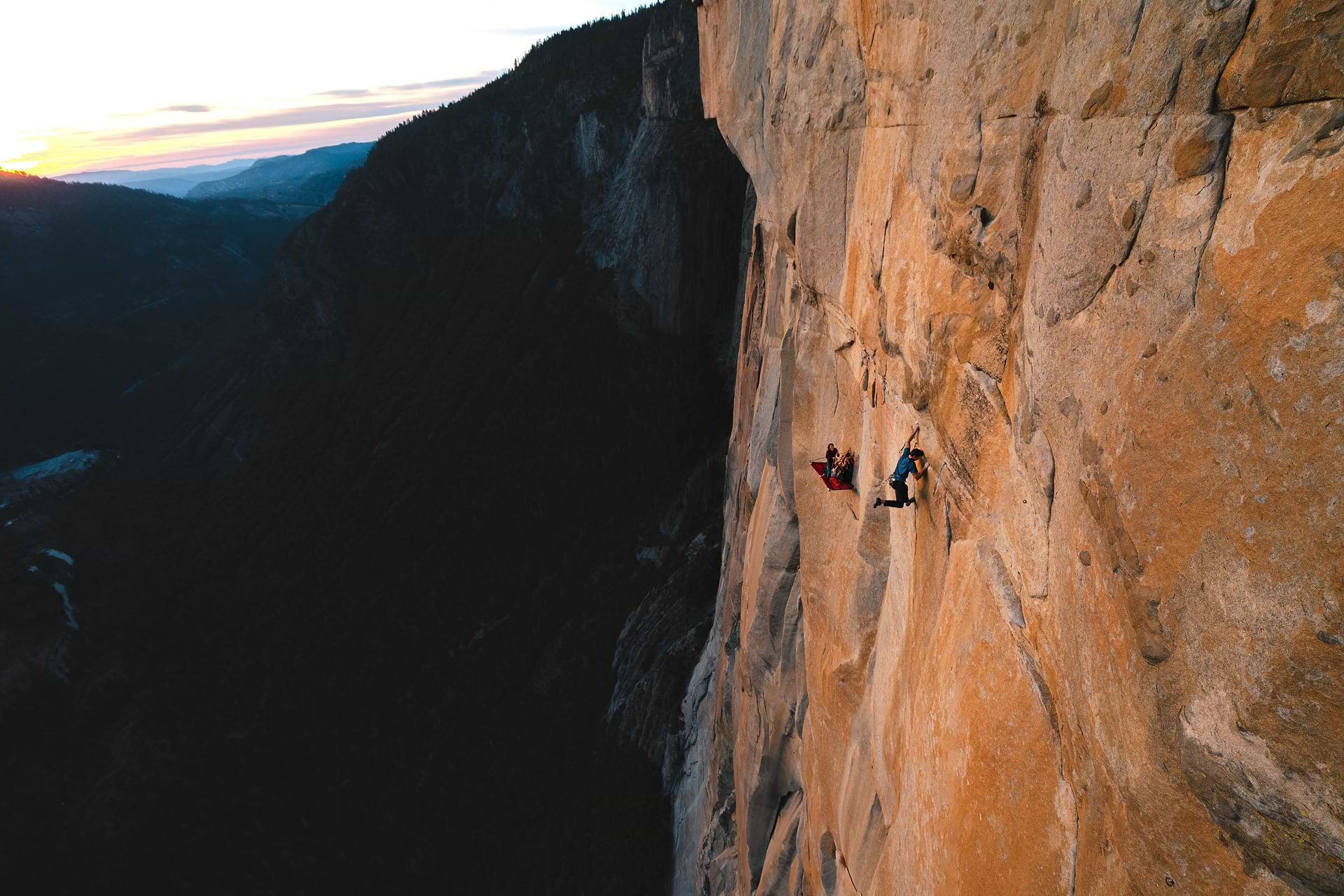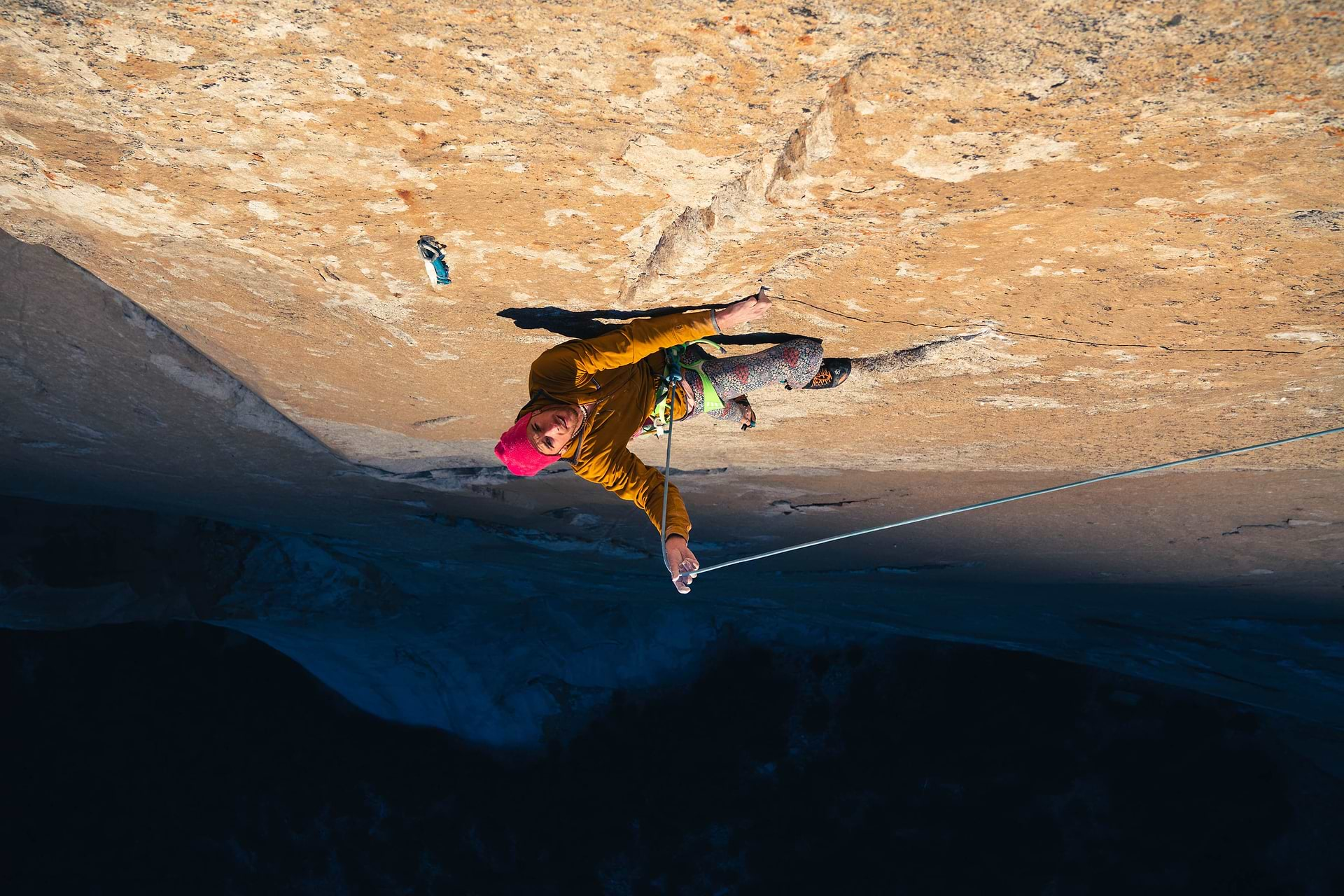

There is a moment when the world distills to a single breath, a single move, a singularity of existence. Your fingers search the stone for purchase. A whisper of wind dances through the canyon, reminding you how high you’ve climbed, how far you still have to go. There is no room for anything but the next hold. Your thoughts dissolve. This is climbing: a meditation, a battle, a love affair.

Shelby Wilkerson is soaking up the last light on “Time’s Up” (5.13a/b) at Smith Rock, Oregon, the birthplace of sport climbing in the United States.

Kelly Franz hucking a lap on “Majestic” (V6) over the water at Howe Sound near Squamish, British Columbia, Canada.
this urge to look up and envision yourself on higher ground. It could have been during a childhood family hike, on your first mountain vacation, or while watching a rock-climbing movie with friends. That’s because it has always been there. No one has to teach a kid how to climb a tree–humans are natural-born climbers.



with fingertips tracing natural history in granite, dolomite, and sandstone. It is the poetry of movement, a communion with parts of the earth that have existed long before us and will remain long after we are gone. We are temporary, but the mountains endure. To climb is to become part of the earth’s remarkable story, even if only for a fleeting moment.
– the experience is raw and wild, a rush of adrenaline and uncertainty. Your body is rigid, and your mind overthinks every move. You feel your fragility, the precarious nature of your existence against the expanse of stone. But then, somewhere in the repetition of movement, a shift occurs. The rock is no longer an adversary; it becomes a partner in your ascent, a guide rather than an obstacle. Your hands memorize its edges, and your feet learn to trust its friction. Fear transforms into focus. Doubt becomes determination. And in that transformation, something else is born: belonging.



It teaches patience, resilience, and the art of failing with grace. You learn to embrace the fall, trust the rope, and recognize that success is not always about reaching the top but about the effort it takes to try. Some climbs will break you. Some routes will humble you. Walls will force you to question your limits. And yet, you return—repeatedly—because climbing is a love that does not wane.

Jacob Cook rides the wave through a powerful, crimping sequence on the crux pitch of the “Prow Wall” (5.14) in Squamish, British Columbia, Canada.

A climber lowering into the fog in the Blue Mountains in New South Wales, Australia.
In a world that demands our constant attention, climbing requires something different: singular focus. The distractions of daily life vanish when you are suspended hundreds of feet above the ground, relying solely on your strength and your partnership with your belayer. It is here, in this suspended space between earth and sky, that clarity emerges. Every problem, every worry, every deadline fades beneath the immediacy of the climb. Here, you are nothing more and nothing less than alive.

Tania Curiel climbing on “Kings of Rap” (5.12d) between snow showers at Smith Rock, Oregon, USA.
There are sunbaked desert sandstone towers that remind you to climb with reverence. There are glaciated peaks where ice glistens in blue and ephemeral forms, daring you to defy the elements. There are overhung boulders that require precise yet explosive movement, and long alpine ridges where endurance is the only way forward. Each climb tells its story, and each route offers a different conversation between humans and mountains.

All summer, the village of Index, Washington, with 157 residents, welcomes itinerant rock climbers seeking clear waters and top granite. These “dirtbags” park their vehicles and relax during long summer days filled with parking lot hangs and endless coffee, waiting for the walls to shade and the climbing day to start.

As the winter sun sets, Hunter Murray is swimming up “Vicious Fish” (5.13d) at Smith Rock, Oregon, USA.
it is about community. It is the shared silence at a belay station, the mutual respect and understanding between partners who have entrusted each other with their lives. It is the laughter at the base of the crag, the collective breath held as a friend makes a daring move, and the camaraderie of aching hands wrapped around cups of coffee in the early morning light. Climbing is a bond.



The answer is simple yet impossible to fully explain with words. We climb because it makes us feel more like ourselves. Because somewhere between the base and the summit, we are reminded of what is true. Because the rock does not care for ego, does not judge or concede—it simply exists, waiting for those willing to engage with it on its terms. And in that engagement, we sometimes discover pieces of ourselves we never knew were missing.
So we climb. We tie in, take a deep breath, and step off the ground, knowing that for a brief moment, we will touch something vast and unyielding. We understand that the view will always be worth it when we reach the top, whether of a boulder problem, a towering face, or simply our perceived limits.

VICTORIA KOHNER-FLANAGAN is an avid rock climber and award-winning photographer whose work seeks to document her experiences living on the road. She finds joy in capturing the meaningful connections forged between people and places, both on and off the wall. Originally from Hood River, Oregon, USA, she has been travelling full-time for the past five years, living in her van. Kohner-Flanagan has been shooting since 2020 but has only been doing so professionally for the last three years.
RELATED STORIES